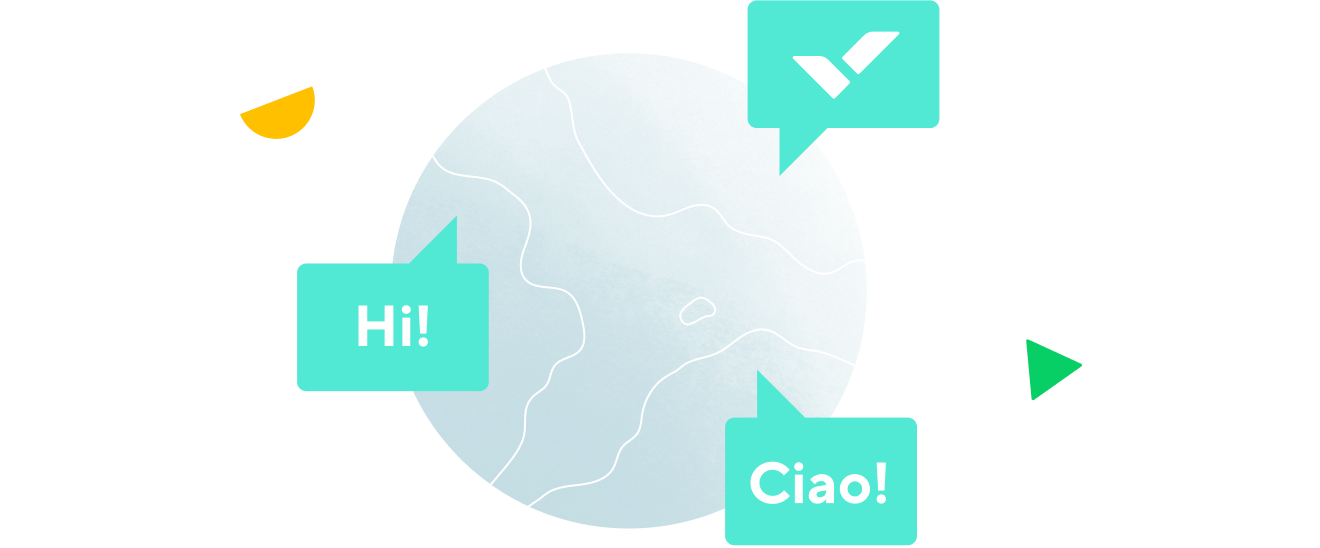What Is a Kanban Board? Examples and Usage Guide
- 1. What Is Kanban? The Ultimate Guide to Kanban Methodology
- 2. The Core Kanban Principles and Practices
- 3. What Is a Kanban Board? Examples and Usage Guide
- 4. Everything You Need to Know About Kanban Cards
- 5. Ultimate List of Kanban Tools and Software
- 6. Practical Kanban Templates and Examples
- 7. The Complete Guide to Personal Kanban
- 8. Kanban WIP - Work In Progress Limits Explained
- 9. What Is a Kanban Retrospective Meeting?
- 10. Kanban vs. Scrum Comparison Guide
- 11. Glossary of Kanban Project Management Terms
- 12. FAQs
- 1. What Is Kanban? The Ultimate Guide to Kanban Methodology
- 2. The Core Kanban Principles and Practices
- 3. What Is a Kanban Board? Examples and Usage Guide
- 4. Everything You Need to Know About Kanban Cards
- 5. Ultimate List of Kanban Tools and Software
- 6. Practical Kanban Templates and Examples
- 7. The Complete Guide to Personal Kanban
- 8. Kanban WIP - Work In Progress Limits Explained
- 9. What Is a Kanban Retrospective Meeting?
- 10. Kanban vs. Scrum Comparison Guide
- 11. Glossary of Kanban Project Management Terms
- 12. FAQs
What Is a Kanban Board? Examples and Usage Guide
A Kanban board is an easy-to-use tool used to visualize and manage workflows. It features columns representing stages of a workflow process. Kanban cards are used to track individual tasks and activities as they progress through the stages.
This guide discusses all you need to know about Kanban boards. You’ll learn the Kanban board definition, types, benefits, essential components, and how to create and use them.
Here’s an example of a digital version — Wrike’s own Kanban board view:
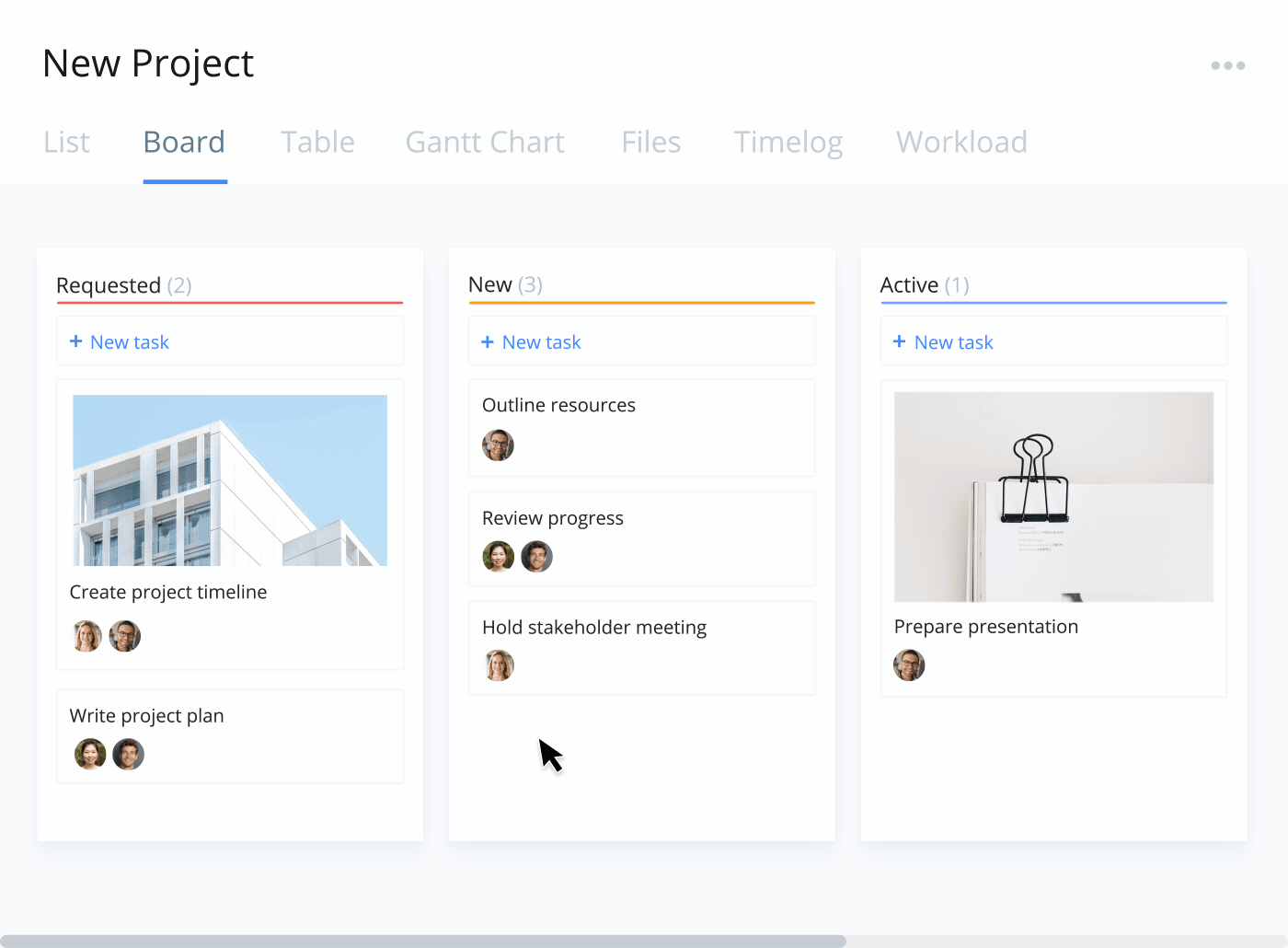
The two main types of Kanban boards are physical and digital Kanban boards. Each has its advantages and is suited to different situations. The choice between a physical and digital Kanban board depends on the individual or team’s needs and context.
Physical boards are best for in-office, colocated teams. A digital board is better for remote and hybrid teams, especially those working on complex projects.
Kanban board examples
If you have worked in software development or are familiar with the Scrum framework you’ll be familiar with the physical version of a Kanban board: a whiteboard covered in post-it notes that project teams huddle around during their daily meetings.
Advantages include:
- Tactile interaction: Physical boards provide a hands-on experience that many users find satisfying and motivating. Moving a card physically can feel more rewarding and create a sense of progress.
- Visibility: A physical board in a common area provides a high level of visibility to everyone in the office. It’s hard to ignore or forget about a large, colorful board you walk past multiple times daily.
- Informal communication: Physical boards can encourage informal communication and spontaneous discussions. Team members can discuss a task as they move its card, promoting collaboration and problem solving.
A digital Kanban board, on the other hand, is an online tool that mimics the functions of a physical board. Digital Kanban boards allow team members to virtually create and move cards across columns in an online Kanban board.
Advantages include:
- Accessibility: Digital Kanban boards can be accessed from anywhere at any time. This is most beneficial for remote teams and collaborators who work from multiple locations.
- Scalability: Digital boards can easily handle a large number of tasks and team members. They’re well suited to complex projects with many moving parts.
- Integration and automation: Digital boards integrate easily with other modern work apps and tools, such as calendars, email, and project management software. Many also offer automation features, such as moving tasks based on triggers or sending notifications when a task status changes or is due.
- History tracking and reporting: Digital boards can track changes to tasks over time, providing a history that can be helpful for auditing or learning purposes. They can also generate reports, providing insights into team performance and productivity.
Teams can break big projects into tasks that are assigned to members, and team members can update the board by moving their cards from one column to the next toward completion. When a task is done, a new card is requested or pulled into the active column and the task begins.
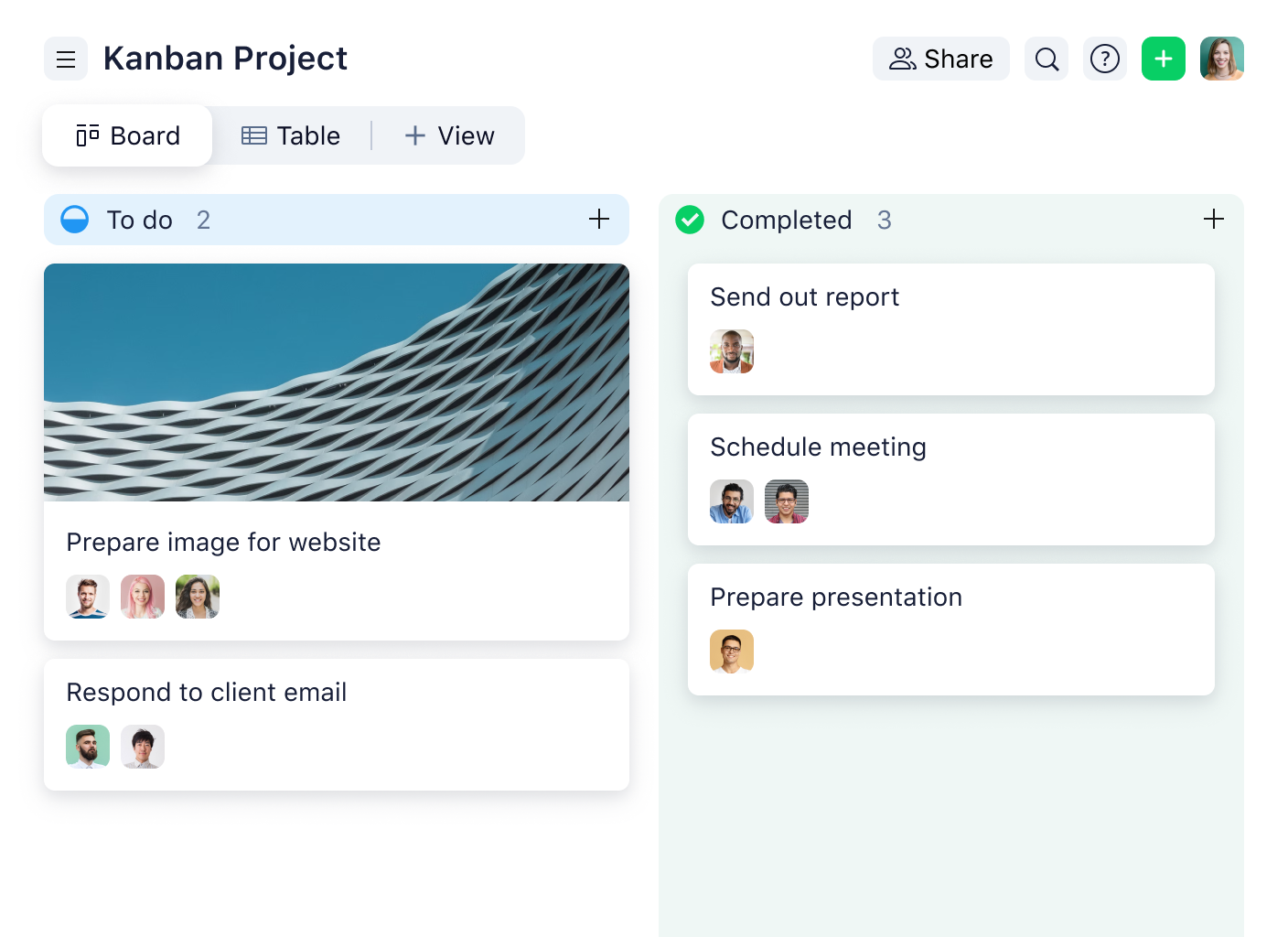

Why use a Kanban board?
There are many reasons your team may choose to use a Kanban board for project and task management. Delivery and support teams, for example, can find that Kanban boards are a simple way of visualizing already existing workflows. Before exploring this further, let’s dive into a few more reasons why you should be using Kanban boards for your projects.
Benefits of using a Kanban board for task management
Ease of use: Kanban boards can be explained and set up in minutes.
Flexibility: Kanban boards can be adapted for most processes.
Clarity: Kanban boards offer both big-picture views of a process as well as the more granular detail (the information carried by individual cards).
Collaboration: Kanban boards become a focal point of a project where team members congregate to discuss work-in-progress. This is true for both physical boards and online versions.
Efficiency: Efficiency was the original objective when Kanban was first developed in manufacturing. The visual approach, complemented by a set of principles and practices, has helped thousands of organizations streamline operations.
Culture: One of Kanban’s principles is to “encourage acts of leadership at all levels in your organization.” Kanban’s simplicity means that everyone understands where projects stand. Information is not hidden away in documentation or complex charts.
These are all important points but the first one — ease of use — is a big reason why Kanban has been so successful throughout the years. The barrier to adoption is minimal. They are cheap to set up and you don’t need training or certification to use them.
Essential features of a Kanban board
Below are some of the critical features of a Kanban board. These features work together to provide a transparent, flexible, and visual representation of work to facilitate improved efficiency in managing tasks, teams, and workflows.
- Columns: Columns are a fundamental part of a Kanban board, representing different stages of a workflow. Each column signifies a specific activity or phase in the process, such as To Do, In Progress, In Review, or Done.
- Cards: Each Kanban card represents a task or a work item. Task details, such as its description, assignee, due date, etc., are usually written on the card. Cards are moved from one column to the next as the task progresses through different stages.
- Visual signals: Visual signals are used in Kanban boards to convey information quickly. This could include color-coding cards to indicate priority or type of work, using symbols or stickers to highlight specific features of a task, or using lines to divide a column further into sub-stages.
- WIP limits: Work-in-progress (WIP) limits are an essential feature of many Kanban boards. A WIP limit restricts the number of tasks that can be in a particular column (or in progress) at any given time. This helps to prevent overloading and promotes a focus on completing tasks.
- Swimlanes: Swimlanes are horizontal rows on a Kanban board that can be used to categorize tasks further. They might be used to differentiate between different types of work, teams, projects, and priorities.
- Blocking and signaling icons: If a task is blocked for any reason, a block icon or a visual signal is placed on the card. This alerts the team that there’s an issue to be resolved before the task can proceed.
- Due dates: If tasks need to be completed by a specific date, these due dates are often indicated directly on the cards. This helps keep timelines visible and top of mind.
- Card aging: Card aging indicates how long a task has been in a particular column. If a card has been in the same column for a long time, it might change color or show a warning sign, prompting the team to take action.
- Commitment point: The commitment point in Kanban is a point where a task is pulled from the backlog into the active workflow, and work on it officially commences.
- Delivery point: The delivery point is a stage where a task or project is deemed complete. This signifies the end of the team’s workflow for that particular item and is typically represented by the Done or Completed column on the board.
- Attachments and comments: On digital Kanban boards, cards can often include attachments and comments. This allows team members to share relevant information and files relating to a task on one platform.
The ultimate objective of a Kanban team practicing the Agile methodology is to navigate tasks from the commitment point to the delivery point efficiently, successfully, and consistently.
Make huge projects manageable with Kanban boards
How to create a Kanban board
Creating a Kanban board does not have to be complicated. Follow the steps below to begin creating and using your own board for better project management.
1. Define your workflow
Start by defining your team’s workflow. This is the process that every task or work item must go through from initiation to completion. A simple workflow consists of standard stages like To Do, In Progress, and Done. More complex workflows might include additional stages, including Backlog, Testing and QA, and Pending Approval. It is essential that your workflow accurately represents how work is done in your organization.
2. Create columns for each stage
The next step is to create a column for each stage of your workflow on your Kanban board. Each column shows what phase a task or work item is in the process. When a task moves from one stage to the next, its card is transferred to the corresponding column.
3. Create cards for tasks
Kanban cards represent each task or work item. Write or type the task description on a card and place it in the appropriate column based on its current priority or work stage. If you’re using a digital tool, you can often add additional information, such as the assignee, due date, attachments, and comments.
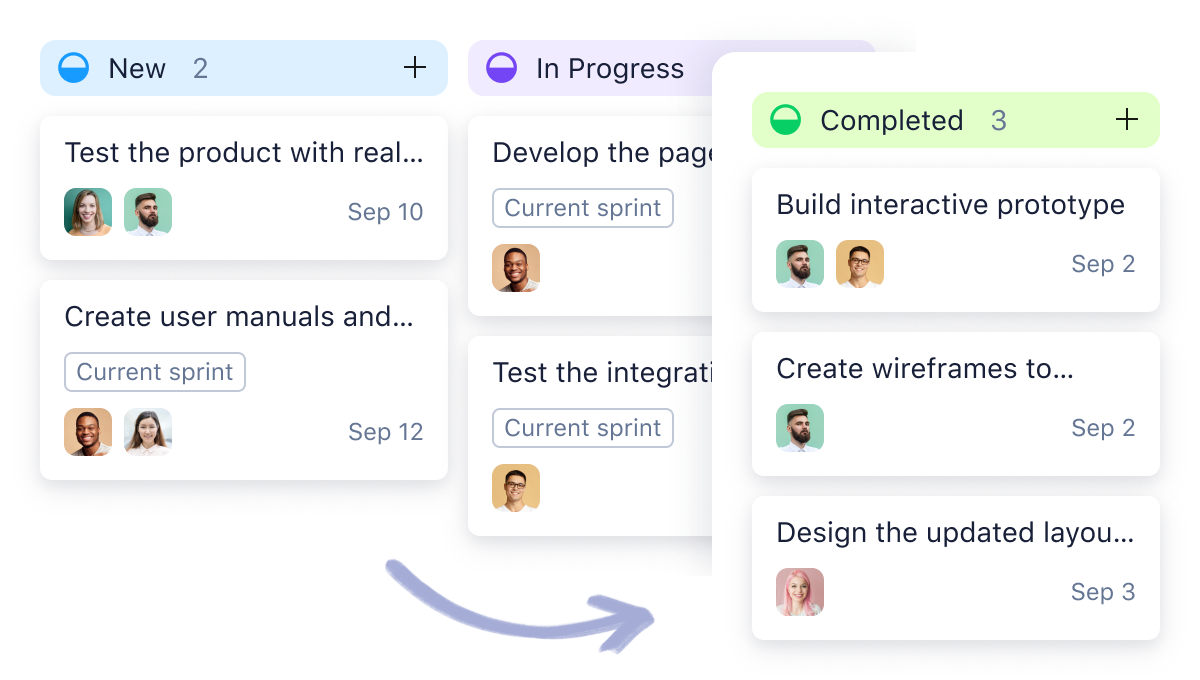

4. Set WIP limits
Set a WIP limit for each column based on your team’s capacity. For example, smaller teams may need smaller limits.
5. Pull tasks through the workflow
The principle of Kanban is to ‘pull’ work through the system. When a team member is ready to take on a new task, they look at the To Do column (or the rightmost column with tasks within the WIP limit) and pull a task into their In Progress column.
6. Monitor and adjust
One of the key benefits of a Kanban board is its ability to make project progress and workflow issues visible. Regularly review your board to identify any bottlenecks or columns with too many tasks and adjust your process, WIP limits, or resource allocation as necessary to improve flow and productivity.
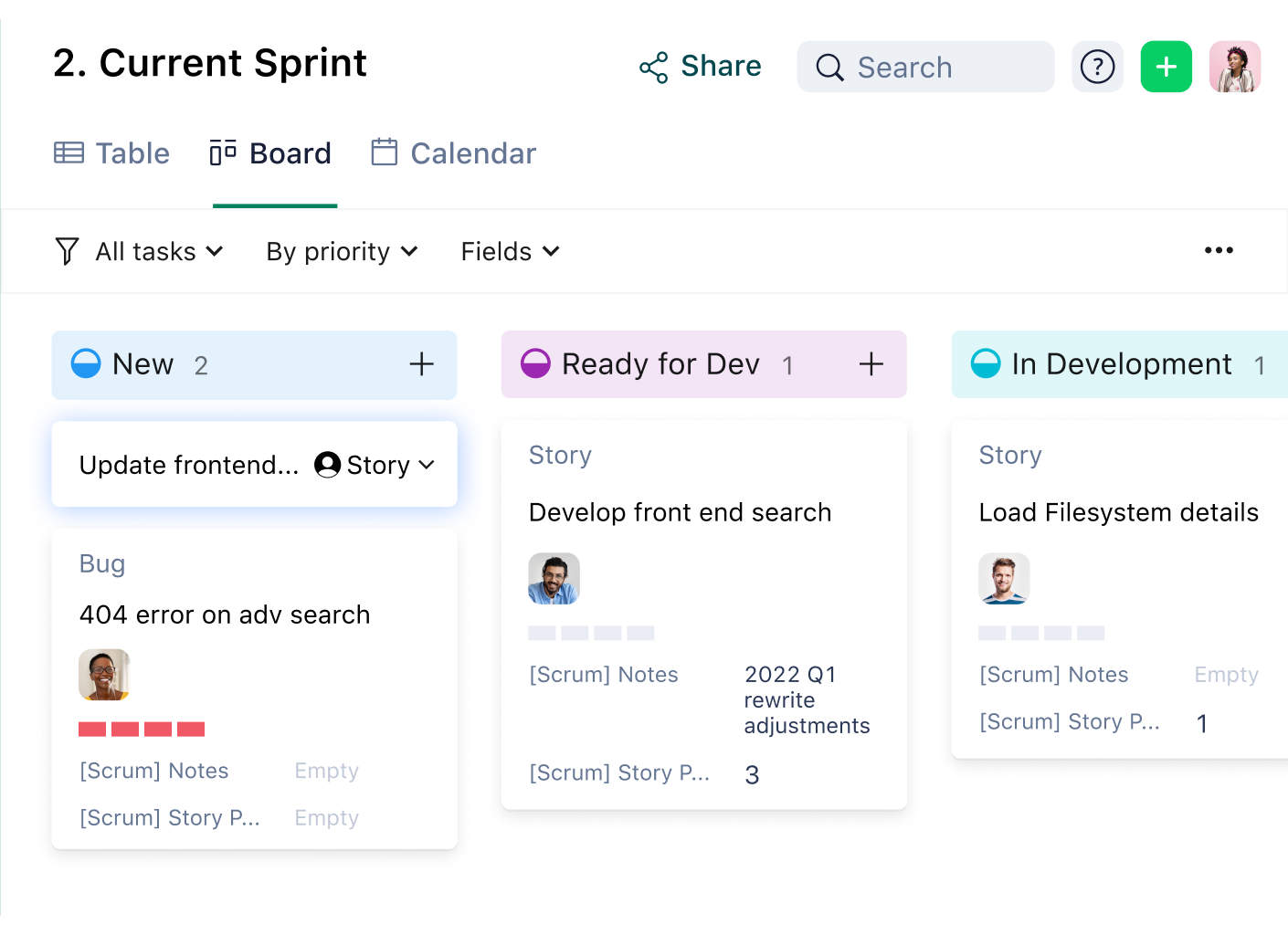

7. Continually improve
A Kanban board isn’t a set-and-forget tool. It’s an active representation of your work and your process. As your team learns and evolves, so should your board. When your projects change, so should your board. Continually look for ways to improve your board and workflow to help your team collaborate more effectively and efficiently.
Kanban board best practices
Because of its simplicity, Kanban has seen adoption grow across many industries and business functions. But to reap the full benefits of this system, teams need to follow a set of best practices. Below are some key ones to consider:
- Visualize the entire workflow: Your Kanban board should reflect your team’s process from task inception to completion. Each step should have a dedicated column or section on the board. This provides a holistic view of your team or organization’s workflow.
- Limit work-in-progress (WIP): Set a maximum number of tasks for each stage of the process, and adjust as needed.
- Manage flow: The goal of Kanban is not just to visualize work but to optimize the flow of work. Monitor the movement of tasks on your board to spot bottlenecks and areas for improvement.
- Make policies explicit: It’s crucial that everyone on the team understands how to use the Kanban board. Make sure your process and policies are clearly defined and communicated. This includes things like how and when to move cards, what each column means, how to indicate blocked tasks, etc.
- Leverage feedback loops: Regularly review and discuss the state of the board and the workflow with your team. Use this feedback to drive continuous improvement.
- Use visual signals: Use colors, symbols, or tags to convey additional information. This could include the type or priority of tasks, who’s responsible for them, or their due dates.
- Update the board regularly: The Kanban board should reflect your project’s progress. Ensure it is updated regularly so it remains an accurate and reliable tool for your team. In digital Kanban tools, this often means moving tasks as soon as their status changes.
- Adapt and evolve: Your Kanban board should evolve with your team and processes. Don’t be afraid to make changes and experiment with different configurations to see what enhances efficiency for your team.
- Respect current processes: Kanban is about introducing change incrementally without causing significant disruption. Understand your current processes and respect existing roles and responsibilities while gradually implementing Kanban practices.
- Encourage collaboration and communication: A Kanban board is not just a project management tool but also a communication tool. It should encourage discussion among team members and promote transparency in work processes.
Enhance your Kanban board with Wrike
A Kanban board is a visual project management tool showing a team’s active workflow. It’s easy to use and understand, and is a great system for collaborative teams to work together seamlessly.
Wrike’s product management software provides a robust suite of Kanban board features for improving team and task management. You can:
- Create custom workflows: Wrike’s Kanban boards are highly flexible and customizable, allowing you to create workflows that perfectly match your team’s process. You can add, remove, or rename columns, and drag and drop tasks between them to reflect their current status. This flexibility makes Wrike suitable for any team, regardless of their specific workflow or industry.
- Sync calendars to team members’ tasks: Wrike allows you to sync your Kanban board with team members’ calendars. When a task’s due date is set or updated on the Kanban board, the change is automatically reflected in the assigned team member’s calendar. This synchronization ensures that everyone is aware of their task deadlines, which can help improve time management and prevent missed deadlines.
- Track time spent on specific tasks: With Wrike’s built-in time tracking feature, you can accurately track the time spent on each task on your Kanban board. Team members can log the time they spend working on a task, providing valuable data for analyzing productivity, estimating future tasks, and billing clients. This feature can also help identify tasks that are taking longer than expected, allowing you to adjust your workflow or resources as necessary.
- Use templates to save time: Wrike provides a variety of templates, including a Kanban template. Instead of starting from scratch, you can use a template and then customize it to suit your needs. This not only saves time but also ensures that you’re following best practices for setting up your Kanban board.
- Monitor and adjust team workloads: Wrike’s workload view allows you to see at a glance how tasks are distributed across your team. This can help you identify team members who may be overloaded or underutilized, and adjust assignments to balance the workload. By ensuring that work is evenly distributed, you can prevent burnout, improve morale, and boost productivity.


